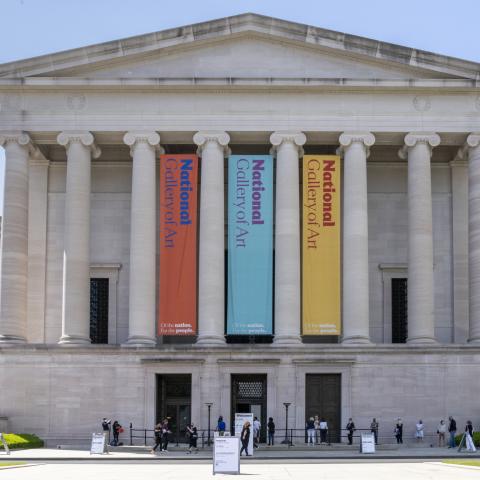Finding Awe: Sir Edwin Landseer’s Alpine Mastiffs Reanimating a Distressed Traveler
-
–
-
Register on

Reflect on the complexity of awe, an emotion that can be either euphoric or terrifying in different contexts. Consider the role that animals play in our lives and how their actions impact or inspire us.
During this 90-minute pause from your daily route, we’ll look slowly and mindfully at Sir Edwin Landseer’s Alpine Mastiffs Reanimating a Distressed Traveler. You’ll be invited to look closely, wonder, and share your insights with the group. Together, we’ll learn “awe practices” that you can bring to your everyday life.
The workshop exploring Alpine Mastiffs Reanimating a Distressed Traveler will be offered on January 23 at 2:15 p.m. and on January 24 at 10:30 a.m. and 2:15 p.m. We encourage you to register for one workshop on this topic and to join us for future topics as well.
Ages 18 and up. Questions? Email us at talks@nga.gov.
“Finding Awe” is grounded in the National Gallery’s mission to welcome all people to explore and experience art, creativity, and our shared humanity. It offers new “awe practices” drawn from the research of Dacher Keltner, professor of psychology at the University of California-Berkeley, director of The Greater Good Science Center, and author of Awe: The New Science of Everyday Wonder and How It Can Transform Your Life (2023). Research shows that experiences of awe help support mental and physical wellbeing and open us up to greater creativity and deeper empathy.
You may also like






